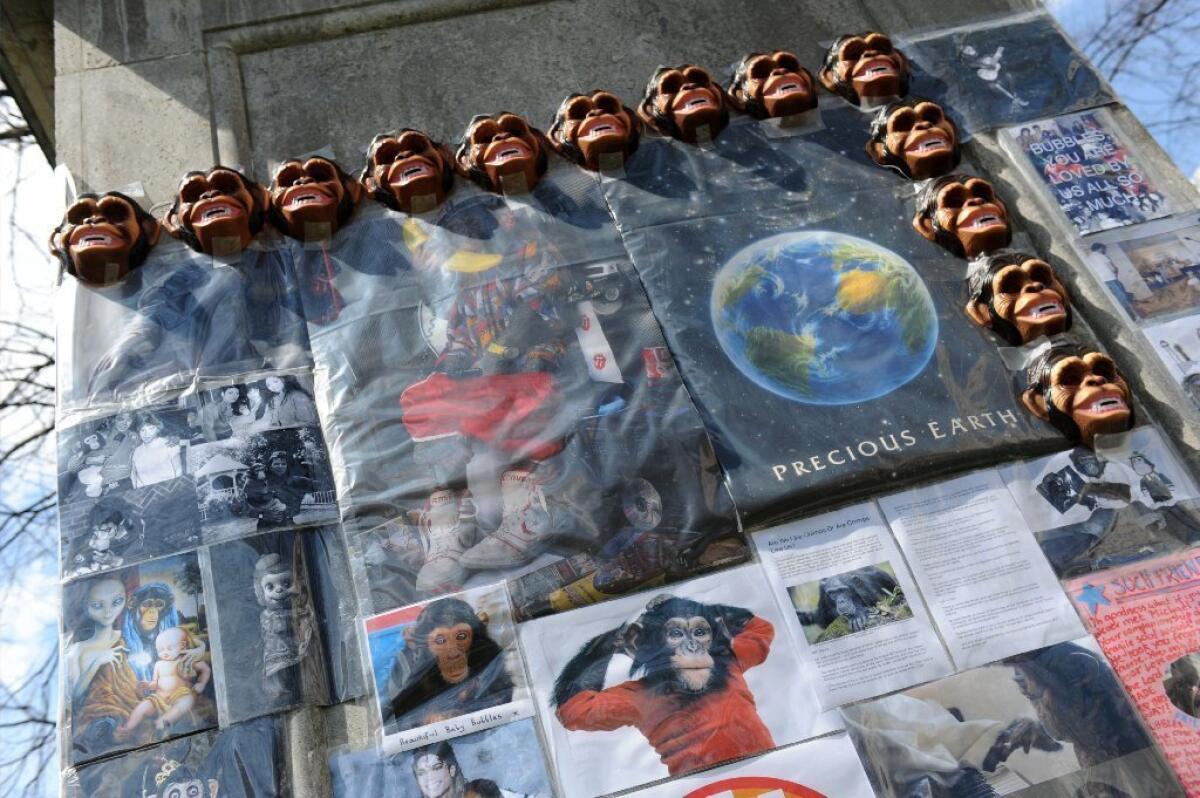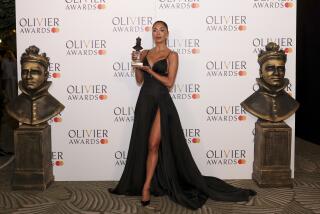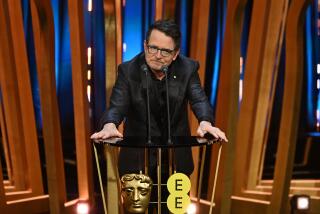Britain’s Tate announces finalists for modern art Turner Prize

- Share via
The Tate Britain announced its four finalists Thursday for the 2013 Turner Prize.
Among them is Lynette Yiadom-Boakye, the first black woman to be named a finalist for the Tate’s modern art prize.
The prestigious – and often controversial – annual award is given to UK-born or -based artists who are under 50 for an “outstanding exhibition or other presentation of their work in the 12 months preceding.” A prize of £25,000 (about $38,600) goes to the winner. The remaining three finalists receive £5,000 (about $7,700) apiece.
CHEAT SHEET: Spring Arts Preview
Yiadom-Boakye, a London-based 35-year-old of Ghanaian descent, creates invented histories for the imaginary people she paints. The Studio Museum in Harlem put up her first solo museum exhibition, “Any Number of Preoccupations,” in 2010. The Tate recognized her for “Extracts and Verses.”
Of her work, the Tate said: “Yiadom-Boakye’s intriguing paintings appear traditional but are in fact much more innovative. Her portraits of imaginary people use invented pre-histories and raise pertinent questions about how we read pictures in general, particularly with regard to black subjects.”
The other three finalists are French-born and London-based filmmaker Laure Prouvost, 35; Macclesfield-born and Glasgow-based multimedia artist David Shrigley, 44; and British-German performance artist Tino Sehgal, 36, who was born in the UK but is now based in Berlin.
Of Prouvost’s films, the Tate said: “Her unique approach to filmmaking, often situated within atmospheric installations, employs strong storytelling, quick cuts, montage and deliberate misuse of language to create surprising and unpredictable work.”
PHOTOS: Arts and culture in pictures by The Times
Shrigley’s “macabre” “Brain Activity,” the Tate said, “offered a comprehensive overview and new perspectives on his work. Including not only his well-loved drawings but also photography, sculpture and film, the exhibition revealed his black humor, macabre intelligence and infinite jest.”
Shrigley’s work was shown in 2002 at the Hammer Museum. “When filling two galleries, more than 100 of his sculptures, drawings, collages and photographs are tedious: too trite to be memorable but too much a symptom of the art world institutions that support them to be ignored,” reviewer David Pagel wrote in the Times.
Sehgal was selected for his “This Variation” and “These Associations” exhibitions, about which the Tate said: “Sehgal’s intimate works consist purely of live encounters between people and demonstrate a keen sensitivity to their institutional context. Through participatory means, they test the limits of artistic material and audience perception in a new and significant way.”
A commissioned work by Sehgal was unveiled last year at the Tate during the Cultural Olympiad surrounding the London Olympics.
The Turner Prize -- established in 1984 and named after 19th century British landscape painter J.M.W. Turner, who was controversial in his day – often leads to heated debates about what is or isn’t art.
Last year’s Turner Prize winner was British video artist Elizabeth Price, recognized for her film “The Woolworths Choir of 1979.”
The winner will be announced at an award ceremony on Dec. 2.
All of the nominees’ work will be on display in a group exhibition in Derry-Londonderry from Oct. 23 through Jan. 5, 2014.
ALSO:
‘It Speaks to Me’: How artists view L.A.’s artworks
Classical music’s spring brings festivals and much more
Art Review: Reynold Reynolds at Christopher Grimes Gallery
MORE
INTERACTIVE: Christopher Hawthorne’s On the Boulevards
CHEAT SHEET: Spring Arts Preview
PHOTOS: Arts and culture in pictures
More to Read
The biggest entertainment stories
Get our big stories about Hollywood, film, television, music, arts, culture and more right in your inbox as soon as they publish.
You may occasionally receive promotional content from the Los Angeles Times.











